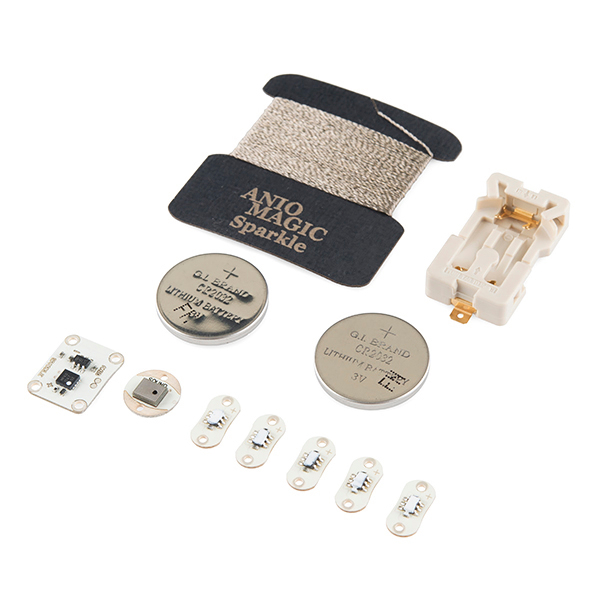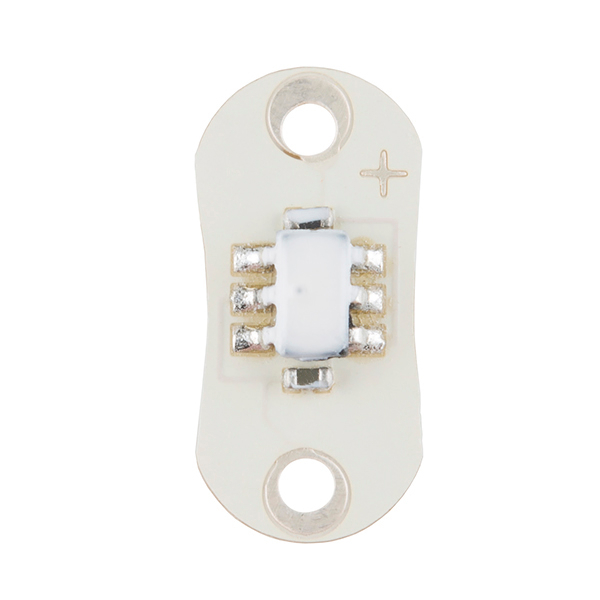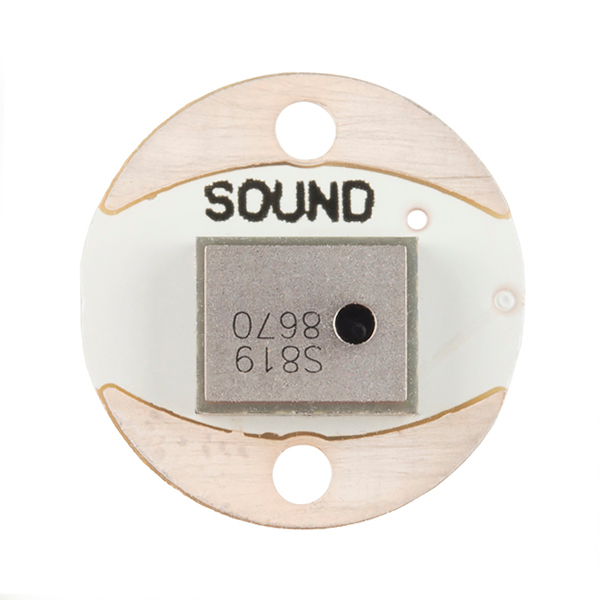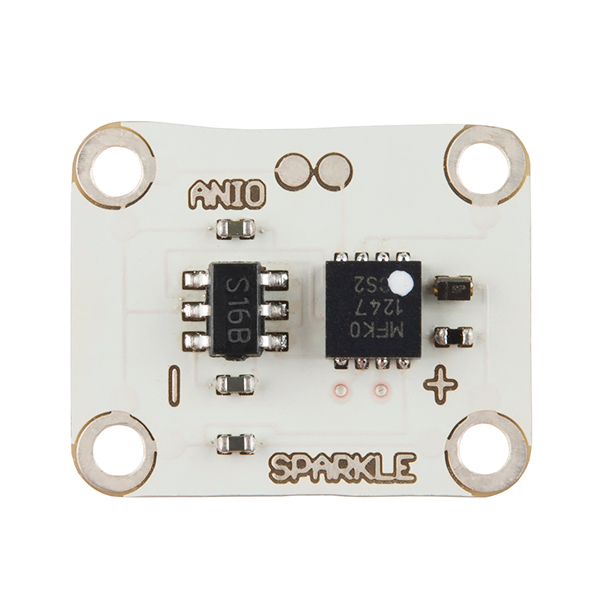×
SparkFun will be closed on Tuesday, December 24th, and Wednesday, December 25th, in observance of the Christmas holiday. Any orders qualifying for same day shipping placed after 2:00 p.m. (MST) on Monday, December 23rd, will be processed on Thursday, December 26th, when we return to regular business hours. Wishing you a safe and happy holiday from all of us at SparkFun!
Please note - we will not be available for Local Pick up orders from December 24th-December 27th. If you place an order for Local Pick-Up we will have those ready on Monday, December 30th.
Chiclet Sound Kit
The Chiclet Sound Kit is Aniomagic's avant-garde way to make interactive textiles, paper, ceramics, and environments. They've made it so easy to implement that anyone can create interactive works of art. Program it directly from a web browser by holding it in front of a computer screen or phone. Connect it with conductive thread, conductive paint, or regular wire. The only limit is your imagination.
The sound kit will help you take your designs to the next level by sensing sounds (like music) and reacting to them. Because sensors need to communicate with the Chiclet, you will have to use LED lightboards instead of plain LEDs or sequins. The kit also includes a large coin cell battery holder and two coin cell batteries to power up your creation.
Note: Due to the requirements of shipping the batteries in this kit, orders may take longer to process and therefore do not qualify for same-day shipping. Sorry for any inconvenience this may cause.
- 1x Chiclet Board
- 1x Sound Board
- 1x Coin Cell Battery Holder
- 2x Coin Cell Batteries (CR2032)
- 5x "Diamond" White LED Lightboards
- 1x Floss Bobbin of Conductive Thread
Chiclet Sound Kit Product Help and Resources
Core Skill: DIY
Whether it's for assembling a kit, hacking an enclosure, or creating your own parts; the DIY skill is all about knowing how to use tools and the techniques associated with them.
Skill Level: Noob - Basic assembly is required. You may need to provide your own basic tools like a screwdriver, hammer or scissors. Power tools or custom parts are not required. Instructions will be included and easy to follow. Sewing may be required, but only with included patterns.
See all skill levels
Core Skill: Programming
If a board needs code or communicates somehow, you're going to need to know how to program or interface with it. The programming skill is all about communication and code.
Skill Level: Rookie - You will need a better fundamental understand of what code is, and how it works. You will be using beginner-level software and development tools like Arduino. You will be dealing directly with code, but numerous examples and libraries are available. Sensors or shields will communicate with serial or TTL.
See all skill levels
Core Skill: Electrical Prototyping
If it requires power, you need to know how much, what all the pins do, and how to hook it up. You may need to reference datasheets, schematics, and know the ins and outs of electronics.
Skill Level: Rookie - You may be required to know a bit more about the component, such as orientation, or how to hook it up, in addition to power requirements. You will need to understand polarized components.
See all skill levels
Comments
Looking for answers to technical questions?
We welcome your comments and suggestions below. However, if you are looking for solutions to technical questions please see our Technical Assistance page.
Customer Reviews
No reviews yet.





I'm confused. Based on the Aniomagic website, your printed description is for "Chiclet", but Dia's video and your photo say "Sparkle". They're not the same product. All versions of Sparkle made before January 2014 worked with sensors; however, this is not true after that date. Currently, only Chiclet works with sensors. Other limits are described on their website. So, what is this: (a) a pre-2014 Sparkle or (b) a post-2013 Chiclet?
This is Nwanua from Aniomagic... sorry for the confusion.
It's (b) a post-2013 Chiclet being sold. The video for the pre-2014 Sparkle is still valid (for now), since from a user's perspective, you take this Chiclet, hook it up, and program it as Dia shows. Of course we'll need a new video.
Chiclet functions just like (a) a pre-2014 Sparkle, in that you program it the same way, and connect it to the lightboards and sensors with two wires. A bit of history: pre-2014 Sparkle had two modes: it could control regular LEDS through PWM, OR it could communicate with smart LEDs (we call them lightboards) and sensors using a one-wire protocol that provides power and data. This turned out to be rather confusing, so we've made things worse by splitting the functionality up.
We need to get some new videos up showing the different uses, emphasizing that although Sparkle pre-2014 could be used for lightboards and LEDs, post-2014 Sparkle is only for regular LEDs. Use Chiclet for sensors and lightboards.
If you sew it into something you wear often, can it handle a washing machine and dryer?
Somewhat: at this stage, we'd always recommend hand washing and air dry:
Although the electronics seem to be able to handle it, conductive thread corrodes and loses some conductivity with each wash; tumble wash and dry can be harsh on your connections (unless you coat the entire thread with puffy fabric paint.
An alternative is to sew the electronics unto a removable piece that you can then attach to your garment, and remove as needed. As always, remove the battery first.
Am I understanding this correctly: That it will respond to specific sounds? Wondering about using it in an application of only responding to certain words or tones.
It only responds to the level of sound. There is no interpretation or specificity of sound.
Does this listen to sounds and respond, or make sounds? And what LEDs can be used with this device?
You can either program it to do a certain light pattern depending on how loud the sound is, or you can program it like a sound-level meter. You'll need to use the smart lightboards because the system uses a single-wire power/data bus to communicates with other components (significantly simplifying the wiring of, say, 40 lights)
So how exactly is this programmed? Binary flashes of some sort?
pretty much.
Super cool. Found a video it... http://www.youtube.com/watch?v=iOGv7_chCLQ#t=164